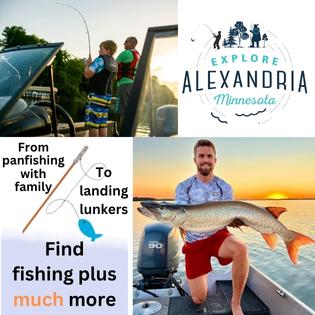Longline trolling a crankbait can be deadly when walleyes are spread across large areas and are unreachable with jigging presentations.
Longline Trolling for Spring Walleyes
Springtime is the perfect time for longline trolling shallow water for walleyes, particularly during the lowlight hours at dusk and dawn, and on into the night. And sometimes, even during the day if sunlight penetration into the water is diminished by rain, wind or cloudy skies.
In many cases, longline trolling can be the bet way to target those postspawn walleyes will be lingering around or near their spawning sites along rocky shorelines, atop shallow reefs, or adjacent to creek or river mouths entering a lake. Particularly males, which are usually slower to disperse than females.
Female walleyes, by comparison, usually waste no time vacating spawning sites; they’re already headed for, or have arrived in, adjacent areas with food and/or cover. Like shallow weedbeds that host spawning perch. Or sandy shorelines that draw spawning shiners or shad.
Where you encounter distinctive spots that draw walleyes to a small area, like a creek mouth or causeway, cast minnow-imitating crankbaits from shore, or while wading.
Use a slow swimming retrieve, imparting the occasional pause, to help trigger strikes from following fish. But don’t overdo it on the action while the water’s cold. Particularly good are neutrally-buoyant cranks like #12 Rapala Husky Jerks, which hang before a fish’s eyes on the pause, infuriating them into striking. Or near-neutrally buoyant Shadow Raps that sink ultra-slowly when paused.
Where walleyes spread across larger or deeper areas that are unreachable on foot, simply longline trolling crankbait will produce fish. Put your outboard in gear at low throttle, or use your electric motor to start easing the boat forward. Simultaneously, cast a shallow-running crankbait out behind the boat, letting out a total of 75 to 100 feet behind the boat before engaging your reel. At the right speed, you should be able to feel the lure wiggling or your rod tip pulsating, but not vibrating hard.
Now, simply handhold the rod, slowly trolling along, again imparting the occasional pump-and-pause to help trigger strikes. Or, place the rod in a holder and wait for it to bend, indicating a strike.
Handholding is preferred, however; you can feel the bait ticking weed tops or rocky bottom, adjusting line length to occasionally scratch objects with your lures. Walleyes, however, often strike free-running baits; you don’t have to bang bottom or cover like you typically do with bass.
Put your time in, changing depth levels on successive passes offshore, or slowly weaving the boat in S-shaped patterns to try different depths. Five to about 12 feet should be about right, depending on the lake. All this variables will determine the amount of strikes you get when longline trolling for walleyes.
Your first bite often indicates an area, depth or type of bottom content or cover that attracts bait and walleyes. Net your fish, then circle back with a few additional trolling passes to see if more are present. If so, you have the option to stop trolling and start casting, which is less likely to spook fish than repeated trolling passes through shallow water.












